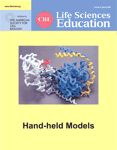Darwin on the Web: Resources for Darwin 200 and Beyond
INTRODUCTION
Charles Darwin's theory of evolution by natural selection transformed many fields of science and is key to modern biology. The year 2009 has been designated as “Darwin 200,” commemorating the bicentenary of Darwin's birth on February 12, 1809, and the 150th anniversary of the publication of his seminal work, On the Origin of Species, on November 24, 1859. This Feature explores online resources about Darwin and his work that can be used at the secondary and undergraduate levels.
A DARWIN EXHIBIT ONLINE
In preparation for Darwin 200, the American Museum of Natural History (AMNH) in New York City developed an exhibit on Charles Darwin and his life. The exhibit was organized in collaboration with the Museum of Science, Boston, MA; The Field Museum, Chicago, IL; the Royal Ontario Museum, Toronto, ON, Canada; and the Natural History Museum, London, England. As a companion to the exhibit, the AMNH developed an excellent, extensive website on Darwin's life and work as well as his impact on contemporary biology (www.amnh.org/exhibitions/darwin/; Figure 1).
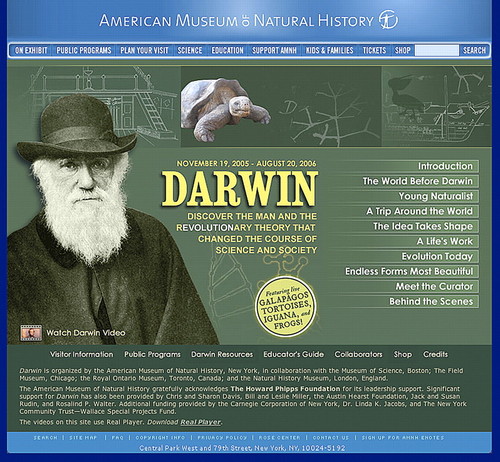
Figure 1. The AMNH's online companion to the Darwin exhibit provides a wealth of information about Darwin's life and work as well as their implications for modern science.
The site content is presented in an engaging manner, told as a story with photographs, images, videos, and audio files; you must have the free RealPlayer software installed to play the latter two formats (www.realplayer.com/realplayer.html?pageid=404Page&pageregion=main&src=404_404_index.html&pcode=rn&opage=404_404_index.html). To build a sense of Darwin's thinking as he built his theory of evolution by natural selection, I particularly liked how the materials combined examples of living species, fossil specimens, and geology along with questions Darwin asked.
An introductory video titled, “The Inside View,” is linked from the homepage of the site. Seven scientists from the AMNH and other institutions talk about the importance of Darwin's theory of evolution to their research today. Examples of each scientist's study organisms, materials, or both are shown as each one briefly describes the theory's implications for his or her research. The video demonstrates the breadth of Darwin's influence, from ichthyology through entomology, evolutionary biology and paleontology, to astrophysics. This 4:36-minute video could be used as an engaging opener to a class discussion on Darwin's theory of evolution.
Major sections of the site include Introduction, The World Before Darwin, Young Naturalist, A Trip Around the World, The Idea Takes Shape, A Life's Work, Evolution Today, and Endless Forms Most Beautiful. Each section includes 1–12 subsections that elaborate on these topics.
In addition to the introductory video, the site includes several other audio and video clips. The simulated soundscape from the Beagle voyage could be used to set the stage as students enter the classroom (6.46 minutes, accessed from A Trip Around the World). A 2.17-minute video tour of Darwin's home, Down House, enables visitors to see some of the rooms in which he worked accessed from A Life's Work). It was particularly exciting to see several specimens he had collected and labeled in his own hand. Another video in this section shows the Sandwalk, where Darwin took a daily walk at noon (2.58-minute video, accessed from “A Day in the Life” subsection). However, narration for these two videos would have made them more powerful. The Evolution Today section also includes several videos. Time-lapse photography vividly illustrates the evolutionary relationship of development in zebrafish, chicken, and pig (55 seconds, accessed from the “How Do We Know Living Things Are Related?” subsection). In the “What Is A Theory?” video, five prominent scientists discuss scientific theories and their role in science (1.54 minutes, in the “What Is A Theory?” subsection). This video is particularly important because many who do not accept evolution focus on the word “theory” to imply evolution is speculation rather than an accepted principle. In the “Scientists on Faith” video, seven individuals, including Francis Collins, discuss the intersection of faith and evolution (4.48 minutes, in the “Social Responses” subsection). This video addresses topics that frequently arise when evolution and religion are addressed together and could fruitfully be used in classes to stimulate a more informed discussion.
The Educator's Guide, accessed from the homepage, was designed primarily as a guide for school visits to the physical exhibit. However, it includes some content instructors could use as well as links to sites with resources for teaching evolution.
MOCKINGBIRDS NOT FINCHES
For many years, textbooks have focused on differences among the beaks of finch species that Darwin saw and collected in the Galápagos Islands, as inspiration for development of his theory of evolution. However, it was mockingbirds that really started Darwin thinking about differences among related species and how these might have arisen. He observed that the differences between birds on four, geographically close islands were greater than the differences he had seen in all of South America. His key insight that species might change once they were physically isolated led to his revolutionary idea of evolution by natural selection.
Two websites provide information about Darwin's mockingbirds. The mockingbird page on the Natural History Museum in London site has a 6.47-minute video (www.nhm.ac.uk/about-us/news/2008/november/darwins-mockingbirds-knock-finches-off-perch.html). It includes live footage of the birds, examples of specimens Darwin collected, a discussion of Darwin's notes about the birds, and a description of how these historical specimens are being used in a conservation biology effort to restore one of the species to an island on which they became extinct in ∼1880.
The Darwin's Mockingbirds site (http://oikos.villanova.edu/Nesomimus/index.html; Figure 2) provides more extensive information about these species. It includes photographs and descriptions of each Galápagos species as well as their mainland relatives. There is also a collection of quotes about mockingbirds from Darwin's writings. The site was developed by Robert L. Curry, who conducted field studies on the birds, and is currently in the Department of Biology at Villanova University in Villanova, PA.
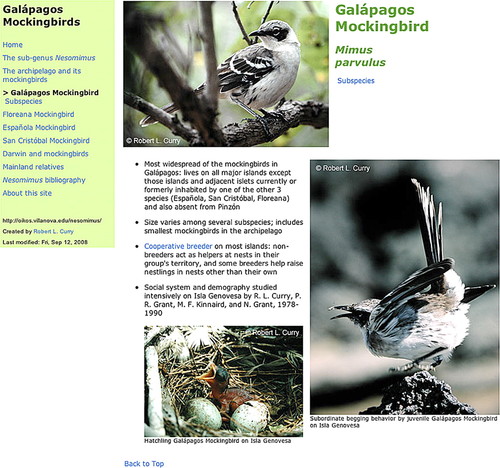
Figure 2. Robert Curry's site, Darwin's Mockingbirds, provides extensive information on each bird as well as excerpts from Darwin's writings about them.
DARWIN'S COMPLETE WORKS ONLINE
The Complete Work of Charles Darwin Online project, directed by John van Wyhe at the University of Cambridge in Cambridge, England, has undertaken the massive project of making Darwin's written works available to anyone with Internet access (http://darwin-online.org.uk; Figure 3). The site says it includes “Darwin's complete publications, 20,000 private papers, the largest Darwin bibliography, manuscript catalogue and hundreds of supplementary works: specimens, biographies, obituaries, reviews, reference works and much more.” Editorial introductions assist visitors in understanding the context for a particular work or set of works.
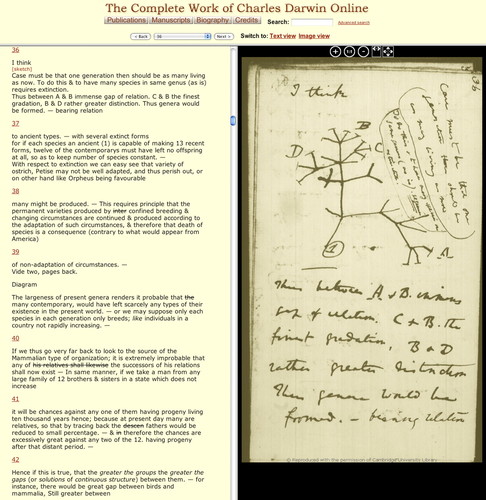
Figure 3. The Complete Work of Charles Darwin Online provides access to thousands of materials, including this image of a page from one of Darwin's notebooks.
Materials are available as scanned images of the original as well as searchable text and PDFs. Handwritten materials are shown as images, side-by-side with transcriptions. I particularly enjoyed exploring Darwin's field notebooks from his Beagle voyage (Figure 3), seeing his handwriting and sketches. More than 1000 illustrations are contained in works on the site; many are collected in the Illustrations section.
If you would like to listen to Darwin's works as you commute or work out, you can download free audio files to play on your mp3 player. For example, the first edition of On the Origin of Species is contained in 21 files. Most of the audio files on the site were created using text-to-speech software, which sounded better than I expected.
THE DARWIN CORRESPONDENCE PROJECT
The Darwin Correspondence Project (www.darwinproject.ac.uk/; Figure 4) was founded in 1974 as a cross-Atlantic collaboration between the American scholar Frederick Burkhardt and University of Cambridge zoologist Sydney Smith. The site includes letters Darwin wrote as well as letters he received. On the homepage, a Daily Quote links to the full text of a letter.
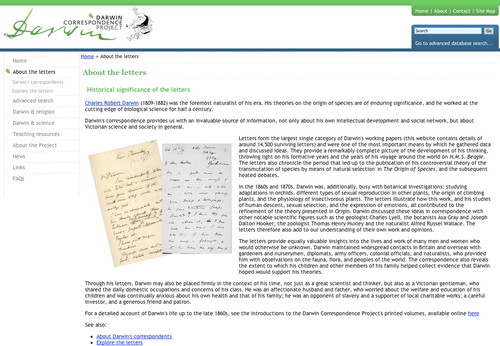
Figure 4. The Darwin Correspondence Project provides transcripts of letters Darwin wrote and received. Images © Cambridge University Library.
The “Explore the Letters” subsection accessed from the About the Letters section) provides links to “a few selected letters—some famous, some fun.” Topics include childhood, the Beagle voyage, family life, health, and evolution. A brief introduction to each letter provides background information, context, or both. A quote piques the visitor's interest to explore the link to the transcript of the complete letter. One quote that caught my eye comes from a letter Darwin wrote to a friend shortly before he set sail on the Beagle: “The scheme is a most magnificent one. We spend ∼2 years in S America, the rest of time larking round the world.” An Advanced Search allows one to search the database for letters that include specific words. For example, “finch” yielded 37 results. A brief summary or the part of the sentence containing the word is supplied for each letter.
One section of the site explores Darwin and Religion. It includes a video (58.14 minutes) of interviews with two University of Cambridge faculty members discussing topics related to the role of Darwin in modern science. Two excerpts from this longer video are also available: 1) Is natural selection creative? (2.08 minutes) and 2) Is natural selection teleological? (4.27 minutes). These clips could be used with students to stimulate class discussion.
Another section of the site focuses on Darwin and Science. The “Beauty and the Seed” subsection uses excerpts from a “letter trail” of Darwin's correspondence to illustrate how Darwin used such correspondence as a research tool and to illustrate how exploring his letters allows one to discover topics in which he was interested but did not publish.
The Teaching Resources section of the site contains 21 sets of selected letters that have been used in undergraduate seminars exploring Darwin's life and work. Major topics include Scientific Networks, Scientific Practice, Controversy, Religion, and Beauty. Most topics include sets of letters on several subtopics. A set of questions is provided to assist instructors in structuring discussions. Suggested further readings also are provided.
ADDITIONAL WEBSITES
The interactive Beagle voyage on the Natural History Museum site (www.nhm.ac.uk/nature-online/science-of-natural-history/expeditions-collecting/beagle-voyage/) enables visitors to follow the ship's journey around the world. Drawings, photographs, and quotes from Darwin's journals paint a picture of the voyage.
“An Eye for the Eye” link on the Darwin 200 page of Nature News (www.nature.com/news/specials/darwin/index.html) contains a slideshow of 13 beautiful images of eyes from a variety of species, with commentary. Eyes were selected because Darwin knew that the eye, which seems to be “designed,” might serve as an argument against natural selection. I was particularly interested to learn that several species have four eyes, each pair with a different function.
Students can use the same methods Darwin used to study plant movements. This work was published in his 1880 book, The Power of Movement in Plants. Instructions are provided on Roger Hangarter's Plants-In-Motion site at Indiana University (http://plantsinmotion.bio.indiana.edu/plantmotion/projects/projects.html).
The HMS Beagle Project plans to build a replica of the ship and follow Darwin's voyage around the world, conducting educational programs and scientific research (http://thebeagleproject.com). I enjoyed reading some of the team's blog entries. You can purchase a T-shirt or sweatshirt to support the effort.
ACKNOWLEDGMENTS
I thank A. Malcolm Campbell for critical comments and helpful suggestions on this article.


